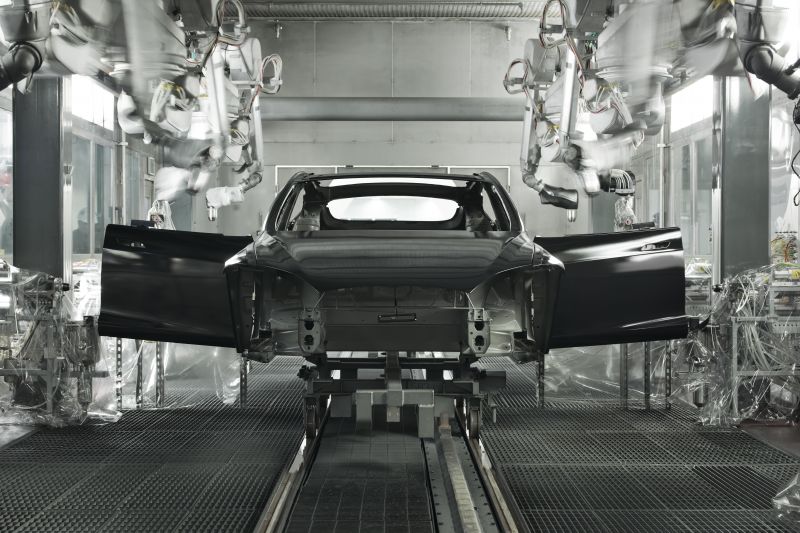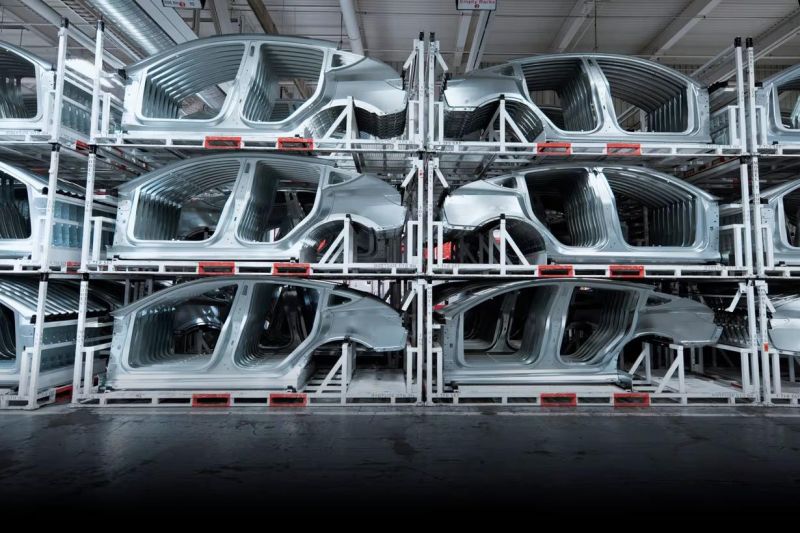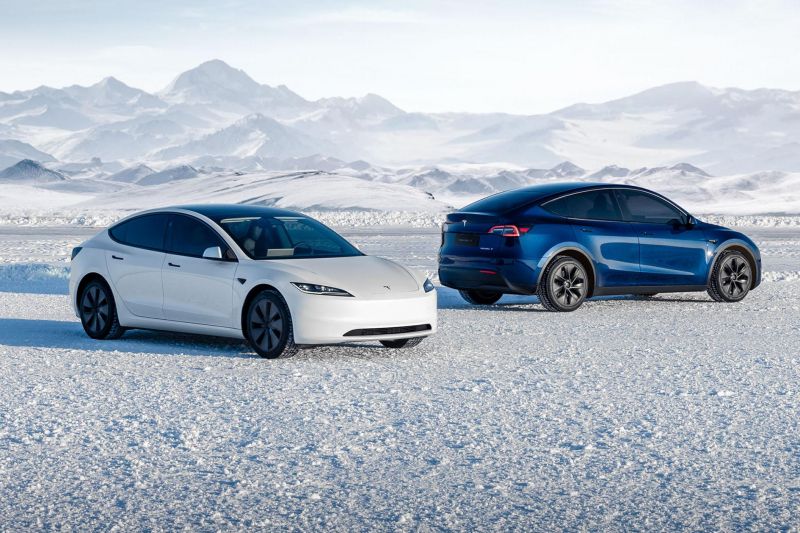Tesla has reportedly scrapped plans for a new production method that would have seen it punch out a vehicle’s underbody in a single piece, simplifying manufacturing and cutting production costs.
Reuters reports word from two sources familiar with the matter that Tesla won’t pursue this evolution of its gigacasting process.
Gigacasting sees Tesla use huge presses with thousands of tonnes of clamping pressure to die-cast large sections of the car’s underbody, but it has never been used to produce an entire underbody in a single piece.
Instead, Reuters reports the Tesla Model Y and Cybertruck currently have their underbodies punched out in three pieces: two gigacasted sections front and rear, plus a midsection made of aluminium and steel which houses the battery.
The news outlet had reported last September that Tesla would use a single-piece gigacasted underbody for its next-generation vehicles.
While the move to a single-piece underbody stamping has the potential to cut costs, Reuters reports Tesla has cancelled these plans in order to rein in short-term spending following recent drops to sales and profitability plus softening global EV demand.
Tesla has also cut costs by laying off more than 10 per cent of its global workforce in April, including senior executives; this week, it was also reported Tesla was axing its Supercharger and new vehicle development teams.
Reuters reported in April that Tesla was also scrapping its upcoming entry-level model, which was expected to be released in the second half of 2025 with a price tag of US$25,000, but sparing its related robotaxi model.
But CEO Elon Musk subsequently said Reuters was “lying (again)” without clarifying just what the outlet allegedly got wrong, while chief designer Franz von Holzhausen warned journalists “don’t always believe what you read”.
In a first-quarter investor presentation, Mr Musk said the brand would use “aspects of the new-generation platform as well as aspects of our current platforms” in its new EVs.
This would allow the company to fast-track these vehicles to as early as the end of 2024 or early 2025.
“This update may result in achieving less cost reduction than previously expected but enables us to prudently grow our vehicle volumes in a more capex efficient manner during uncertain times,” the carmaker said in its presentation materials.
“This would help us fully utilise our current expected maximum capacity of close to three million vehicles, enabling more than 50 per cent growth over 2023 production before investing in new manufacturing lines.”
Tesla is set to reveal its robotaxi on August 8.
Last year, Tesla produced 1,845,985 vehicles worldwide, a new record for the brand and a 35 per cent increase on the year prior.
However, in the first quarter of 2024, Tesla reported 433,371 vehicles produced and just 386,810 sales, representing its lowest quarterly deliveries since 2022.
It also reported a nine per cent drop in revenue in the first quarter, the steepest year-over-year decline since 2012. Total gross profit was down 18 per cent.
Tesla has felt the heat from affordable Chinese rivals, with repeated price cuts – intended to help keep it competitive – eating into the company’s profits.
MORE: Tesla leaning on existing tech to rush cheaper EVs to market this year
MORE: Tesla execs cast doubt on report of affordable EV’s cancellation
MORE: Tesla’s quarterly sales slump to lowest level since 2022, still beats BYD
MORE: Tesla fires Supercharger and new car development teams – report






